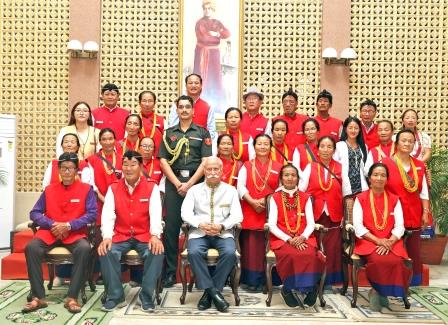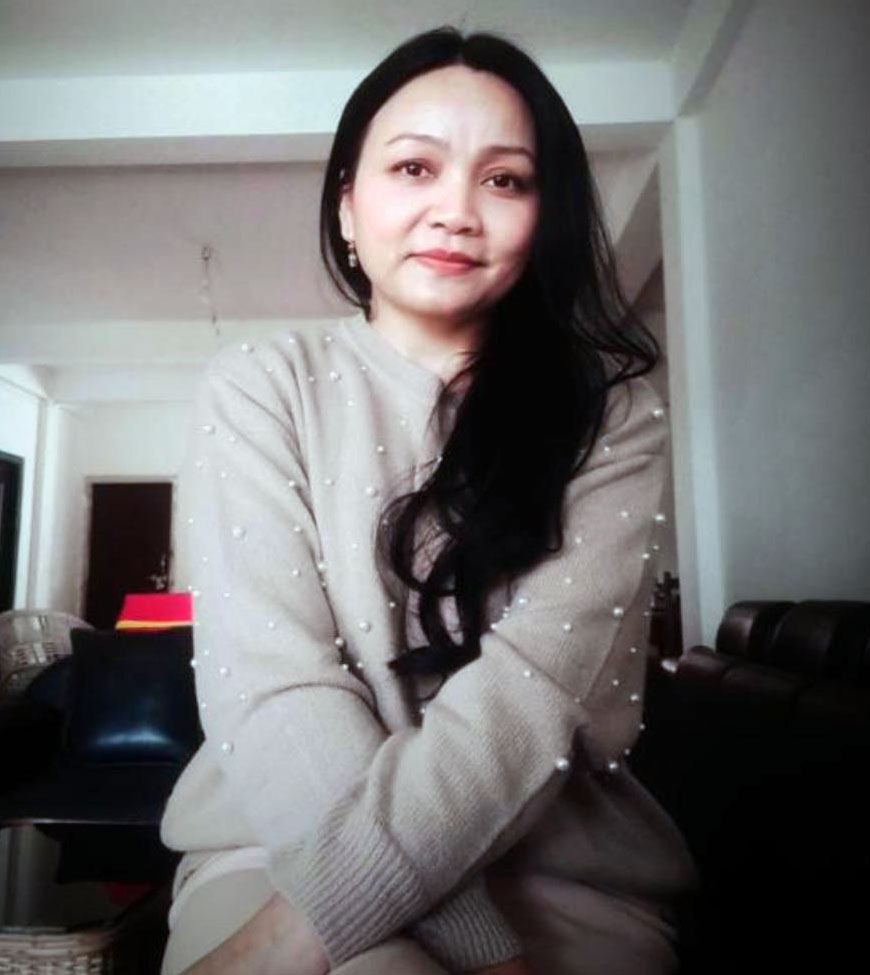-
Vande Mataram a timeless song that stirred the soul…
-
Mein attends reunion of Tai royal families
-
DC Siang visits ITI Pangin
-
Hockey Arunachal joins nationwide celebration of 100 years of…
-
Wangsu chairs district level monitoring committee meeting at…
-
Governor interacts with students under Ashtalakshmi Darshan
-
Fashion craftsmanship program concludes at RG govt polytechnic
-
AR commission chairman visits Ziro
-
 Development begins in villages: Governor
Development begins in villages: Governor
-
Anti-corruption rally demands CM’s resignation
Sivasagar, Nov 7: Deputy Chief Minister Chowna Mein, today attended the reunion of Tai relatives organised by the Society for Tai Ahom Resurgence (STAR) at Yuva Dol, Sivasagar, Assam. The event marked a historic coming together of the Tai Royal Families from Myanmar, descendants of the illustrious Chaolung Sukapha, founder of the Ahom dynasty, and their counterparts from the Tai Ahom Royal Families of Assam.
Addressing the gathering, Mein expressed happiness in being part of this significant cultural reunion, which he described as “a celebration of our shared heritage, our language, and our unbreakable cultural bonds that span across borders.”
He highlighted the profound historical and cultural ties between the Tai Ahom people of Assam and the Tai communities of Myanmar, united by their common ancestry tracing back to Chaolung Sukapha, who established the Ahom Kingdom in 1228 AD a dynasty that ruled for nearly six centuries and shaped the region’s identity and governance.
He lauded the Society for Tai Ahom Resurgence (STAR) and its Chairman, Dr. Hemanta Kumar Gogoi, for their efforts in organising the event and for extending warm hospitality to the distinguished guests from Myanmar. Mein also fondly recalled his long association with Sai San Aik, a Shan history researcher from Myanmar and his own visits to Myanmar including to Putao and Shan Province which helped strengthen people-to-people connections between the Tai communities across borders.
In his address, the Deputy Chief Minister spoke on the migration of the Tai people from Myanmar through the Pangsau Pass and the Patkai ranges, explaining the linguistic and cultural significance of place names such as Pangsau (large field), Patkai (ritual of destiny), Nam Tok, Nam Pong and Nam Chik, which reflect the route of Tai people’s migration and their deep connection with nature, rivers, and agriculture.
He drew attention to the heroic legacy of Ranuah Gohain, a Tai royal leader who fought against British forces in 1839 long before the 1857 Sepoy Mutiny and reiterated his commitment to bringing greater recognition to this forgotten chapter of India’s freedom struggle through historical documentation and archival recovery.
Calling for renewed efforts to preserve and promote the age old Tai language, he described it as a “living link to our collective past and a treasure of history, literature, and tradition.” He urged Tai communities across India and Myanmar to work together for linguistic preservation, cultural research, and youth engagement, saying that “reviving and nurturing the Tai language will deepen understanding and unity among all Tai people.”
Expressing optimism about the future, he said, “This visit is not merely ceremonial but a journey of rediscovery and reunion, a celebration of shared heritage and an affirmation of unbreakable cultural bonds.”
Mein further expressed confidence that the reunion would open new avenues for cultural, historical, and research collaborations between Assam and Myanmar, contributing to a greater appreciation of the Tai civilization and its contributions to the region’s history and identity.
He further extended his heartfelt gratitude to the organisers, dignitaries, and the people of Sivasagar for their hospitality and spirit of cultural pride.

Kenter Joya Riba
(Managing Editor)She is a graduate in Science with post graduation in Sociology from University of Pune. She has been in the media industry for nearly a decade. Before turning to print business, she has been associated with radio and television.
Email: kenterjoyaz@easternsentinel.in / editoreasternsentinel@gmail.com
Phone: 0360-2212313

